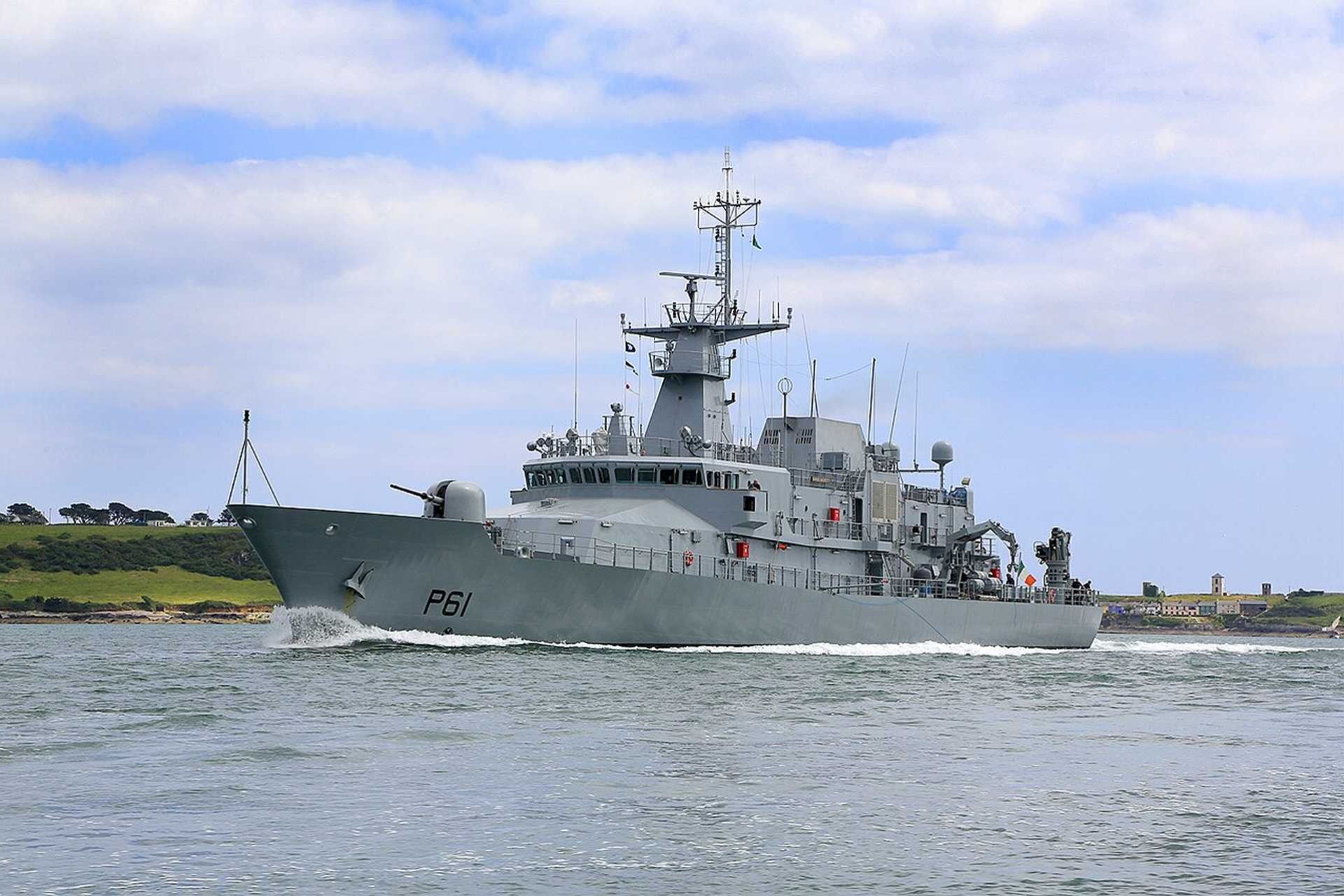Breaking News
Ireland selects Thales to boost subsea surveillance capabilities.
According to information published by the Irish Department of Defence on June 15, 2025, the Tánaiste and Minister for Defence, Simon Harris, announced the signing of a multi-million euro contract with Thales DMS France for the supply of a state-of-the-art towed sonar system for the Irish Naval Service. This contract, which marks the first acquisition of its kind in Ireland, is a cornerstone in the country's efforts to enhance its subsea domain awareness and maritime security. The system is scheduled to be fully operational by 2027.
Follow Army Recognition on Google News at this link

The sonar system will be installed aboard Ireland’s largest Offshore Patrol Vessels (OPVs): LÉ James Joyce, LÉ William Butler Yeats, and LÉ George Bernard Shaw. (Picture source: Irish MoD)
The sonar system, expected to be a member of the Thales CAPTAS (Combined Active/Passive Towed Array Sonar) family, will be installed aboard Ireland’s largest Offshore Patrol Vessels (OPVs): LÉ James Joyce, LÉ William Butler Yeats, and LÉ George Bernard Shaw. These vessels are currently the only platforms in Ireland's fleet with the requisite size, deck space, and support infrastructure to accommodate such advanced sonar equipment. While the exact variant has not been disclosed, expert analysis suggests that Ireland is likely procuring either the CAPTAS-2 or the more advanced CAPTAS-4 system, both of which are internationally recognized for their anti-submarine warfare (ASW) and subsea monitoring capabilities.
The CAPTAS series features a variable-depth tow body capable of deployment to approximately 300 meters, which enables operation below thermoclines that often degrade sonar performance. It utilizes ultra-low frequency active sonar transmitters and linear passive hydrophone arrays, allowing for high-fidelity detection, classification, and localization of underwater targets including submarines, underwater drones, torpedoes, and potential saboteurs of critical seabed infrastructure like communication cables and gas pipelines. The sonar operates in dual modes: active for transmission and tracking, and passive for covert acoustic surveillance.
The CAPTAS-4, also known in British service as Sonar 2087, offers particularly long-range detection capabilities across vast maritime areas and is deployed on advanced frigate classes such as the Royal Navy’s Type 23 and Type 26, and the French FREMM. If selected by Ireland, this system would represent the highest-performing undersea detection capability ever fielded by the country, positioning the Irish Naval Service on par with NATO-standard ASW operators in subsea surveillance.
Lieutenant General Rossa Mulcahy, Chief of Staff of the Defence Forces, confirmed the strategic importance of this advancement, highlighting that the new sonar will significantly improve the Defence Forces' situational awareness and maritime surveillance capacity. The system will contribute directly to monitoring Ireland’s EEZ and defending against threats such as illegal fishing, drug trafficking, terrorism, and espionage.
This investment is part of a broader push by the Irish government to enhance national resilience and maritime defense capabilities, including the development of Ireland’s first National Maritime Security Strategy, participation in EU defense initiatives like PESCO and CISE, and joint efforts with the Department of the Environment to stress test critical infrastructure. The sonar acquisition is supported by a historic increase in defence capital funding, with allocations of €215 million in 2025 and €220 million in 2026, as Ireland continues to build towards its Level of Ambition 2 defense posture.
With the integration of this advanced sonar system by 2027, Ireland will establish a critical “pattern of life” capability in its undersea domain, enabling the detection and interdiction of subsurface threats with unprecedented efficiency.


























